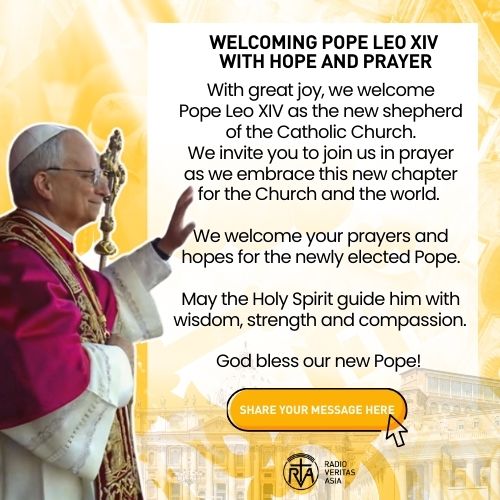The Story of Tribal Christians of Chotanagpur: The Great Pilgrimage of Hope

As the Church in Asia looks toward the Great Pilgrimage of Hope Assembly, to be held in Penang, Malaysia, from November 20 to 27, 2025, more than 800 delegates from across the continent are preparing to reflect on what it means to be “Pilgrims of Hope in Asia.”
The story of the tribal Christians of Chotanagpur, in eastern India, offers a living example of how faith can engage deeply with culture, strengthening a people with resilience, unity, and a hope rooted in both tradition and spirituality.
Our Journey as Tribal Christians of Chotanagpur
Our story begins long before the arrival of Christianity. It is shaped by a worldview that honors nature, values community bonds, and upholds human dignity. When Christianity reached our region in the late nineteenth century, it did not replace our identity; rather, it grew alongside our cultural heritage, forming a vibrant tribal Christianity grounded in justice, solidarity, and communal life.
Today, at a significant moment in history, we see ourselves as pilgrims of hope, journeying toward a future where our faith and culture continue to illuminate and enrich one another. Our story is not simply a chronicle of the past; it is a living journey shaped by memory, land, culture, suffering, and joy.
Faith found a natural home in a culture already steeped in reverence for God and community harmony. Over time, faith and culture flowed together like two rivers merging into a single, strong current. We continue this journey today, seeking a future built on dignity, unity, and shared values.
Faith Before and Beyond Christianity
Our ancestors lived by a profound spiritual wisdom. The Sarna tradition, rooted in the sacred grove, the cycles of seasons, and the divine presence in all creation, embodied harmony with nature and community. We believed that God, known as Dharmes or Singbonga, dwelt in nature and in the very breath of life. This faith was not preserved in manuscripts but expressed in daily life: the sowing and harvesting rituals, care for the land, and the conviction that life is meant to be shared, not owned.
When the Jesuits arrived in 1869, they did not encounter a people lacking faith. They met a people whose faith had been wounded by oppression, through land alienation, unjust systems, and social exploitation. The message of Christ, who stood beside the poor and the oppressed, resonated deeply with our longing for dignity and freedom. Christ felt familiar to us; He became our companion.
Faith grew not only through words but through acts of justice, compassion, and solidarity, helping us reclaim identity, land, and human worth.
A Journey of Faith: From Suffering to Hope
There was a time when tribal communities were oppressed by landlords and administrators who seized land and denied justice. The arrival of Fr Constant Lievens, SJ, later known as the Apostle of Chotanagpur, marked a turning point. Standing with the people, he helped restore their rights and dignity.
For us, faith is inseparable from life. To believe is to care for others, to seek justice, to share, and to safeguard the dignity of every person. Our journey from suffering to renewal has shaped us into a community strengthened by trials yet hopeful; wounded yet resilient. Through this journey, we came to recognize ourselves as children of God, gifted with dignity and rights.
A Faith that Took Root in Culture
Christianity in Chotanagpur did not weaken our cultural identity; it enriched it. Our songs, dances, musical rhythms, and reverence for nature found new expression within our faith. Today, the Church in Chotanagpur remains one of India’s most vibrant examples of inculturation.
-
Our liturgical music carries the rhythm of our drums.
-
Our worship rejoices in dance.
-
Our feasts celebrate sharing and community.
-
Our villages uphold the tradition of collective responsibility and harmony.
Here, faith is not an ideology but a lived experience, colorful, musical, and joyful.
Pilgrims of Hope through Education, Health, and Service
Our journey continues along three key pathways:
Education as Empowerment:
Schools opened doors to knowledge and leadership. Today, countless tribal men and women serve as teachers, nurses, community leaders, social workers, and administrators across India and beyond. Education strengthened our identity and gave us confidence and a voice.
Health Care as Compassion:
Church-led health initiatives brought care to remote regions. Religious sisters, brothers, and lay workers offered healing in body and spirit. Hospitals and health programs continue this legacy of compassion and dignity.
Service as a Way of Life:
For us, faith is most authentic when lived through solidarity, justice, and support for the vulnerable. We walk with those on the margins, embodying compassion in everyday life.
Hope as Our Companion
We walk forward not as strangers to our history, but as a people of hope. Our journey is shared, as families, parishes, villages, and communities, rooted in Christ and in the soil of Chotanagpur.
We carry the wisdom of our ancestors, the courage of our elders, and the dreams of our youth.
As tribal Christians of Chotanagpur, we recognize our vocation to be stewards of creation, builders of justice, bearers of peace, and witnesses of hope.
We walk as Pilgrims of Hope, toward a future shaped by faith, love, courage, and unity.










- Reply
Permalink